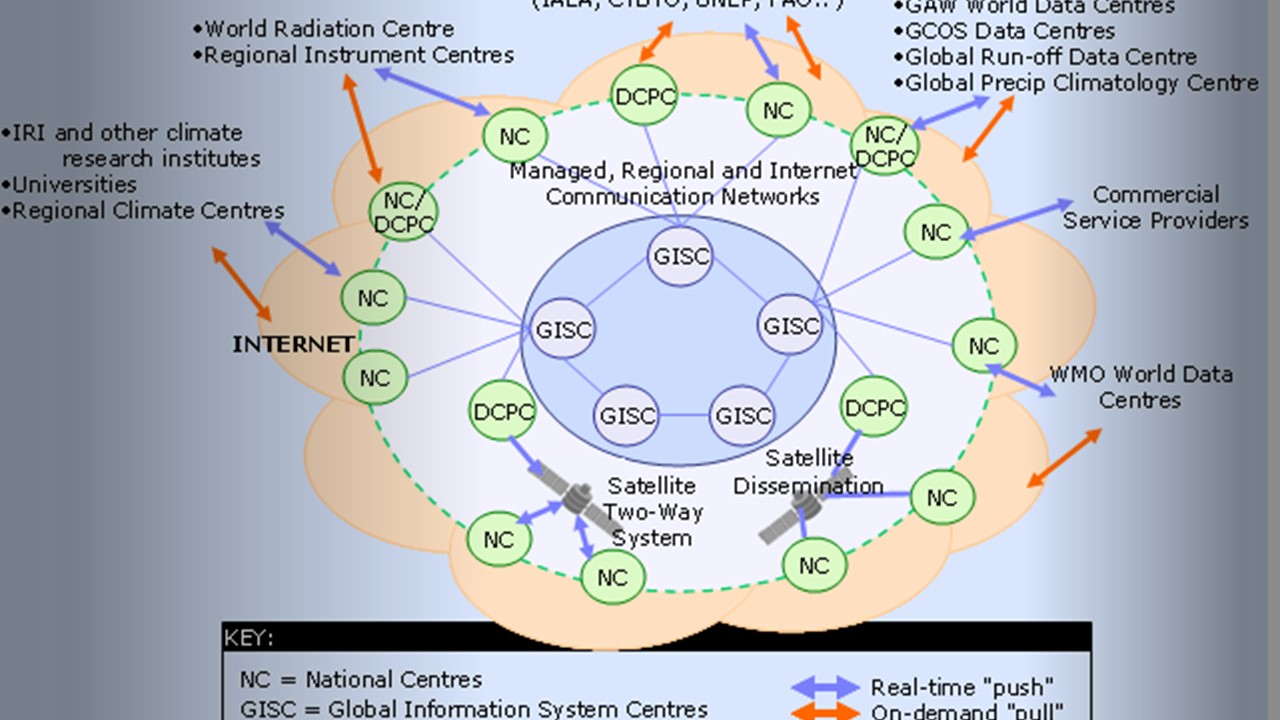WMO Information System (WIS)
The WMO Information System 2.0 (WIS 2.0) is the framework for WMO data sharing in the 21st century for all WMO domains and disciplines. It supports the WMO Unified Data policy and the Global Basic Observing Network (GBON) and makes international, regional, and national data sharing simple, effective, and inexpensive. The idea that no Member should be left behind and the objective of lowering the barrier to adoption has been at the core of WIS 2.0 development. These objectives inspire the principles underpinning the WIS 2.0 technical framework, such as adopting open standards and Web technologies to facilitate sharing of increasing variety and volume of real-time data.
The Commission for Observation, Infrastructure and Information Systems (INFCOM) approved the technical specifications of WIS 2.0 and its implementation plan in October 2022. The new data-sharing infrastructure will gradually replace the Global Telecommunication System (GTS).
Manual on the WMO Information System (WMO-No.1060), Volume II contains standard and recommended practices, procedures, and specifications. The Guide to the WMO Information System (WMO-No.1061), Volume II provides additional information concerning practices, procedures, and specifications that Members are invited to follow or implement in establishing and conducting their arrangements in compliance with the WMO Technical Regulations and in developing meteorological and hydrological services. (For more information, read about the Manual and the Guide).
The users of WIS 2.0 will be able to access data in real-time by subscribing to a Global Broker and receiving notifications when new data are available for download from a Global Cache or from the data provider. The Global Discovery Catalogue will allow users to discover the available datasets on WIS 2.0 and provide information on how and where to access the data.
To support the implementation of WIS2, and ensure no Member is left behind, the WMO Secretariat organizes regional WIS2 Training sessions for WMO Members.
For more information use the links under WIS 2.0 (click to expand).



